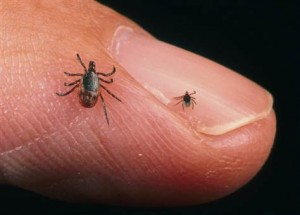 In Townsend, Tn and the Great Smoky Mountains ticks are to be taken very seriously and can be a public health threat. Ticks feed on the blood of three different animals during their development, injecting their saliva that in turn causes intense itching that doesn’t let up.
In Townsend, Tn and the Great Smoky Mountains ticks are to be taken very seriously and can be a public health threat. Ticks feed on the blood of three different animals during their development, injecting their saliva that in turn causes intense itching that doesn’t let up.
If you ever get bitten while hiking or camping in the Smokies, take every precaution. Some people can even have severe allergic reactions, and infected ticks can transfer hazardous pathogens.
Throughout the tick’s life cycle, from the larva to nymph to the adult stage, each feed on mammals, including humans. Some stages of the lone star Ticks can be found from March through October in the Smokies. Individual nymphs and adults usually attack themselves to humans and animals by way of overgrown vegetation along trails and wooded areas.
However, hundreds of tiny seed ticks or larva will attach themselves to anyone unfortunate enough to pass by a newly hatched egg mass.
Adult American dog ticks feed on larger mammals, including humans and dogs. They occur throughout the Southeast and can be dispersed by wildlife. The American dog tick can transmit Rocky Mountain spotted fever; fortunately the proportion of infected ticks is very low. The American dog tick however does not transmits Lyme disease.
The blacklegged tick has recently caused concerns – a carrier of Lyme disease in the eastern United States. It has been found on humans in Kentucky. Deer trails in and around Daniel Boone National Forest were where they were found. These ticks are especially treacherous as they are active during the winter-spring months rather than the summer feeding time characteristic of other species. Tennessee is one place where increased numbers of the blacklegged tick have been found due to deer movement and mild winters.
For states like Kentucky, this marks the first significant presence of Lyme disease. While blacklegged ticks are fairly common in the South, incidences of Lyme disease are pretty low compared to regions in the Northeast and north-central United States.
Recommendations for dealing with nuisance or potentially disease-bearing ticks include wearing protective clothing and applying repellents to skin and clothing when you’re going to be outdoors for lengthy periods of time, especially in wooded areas. Additionally, thorough self-inspection where ticks are known or suspected to be active is invaluable. Ticks frequently wander on the body for an hour or more before feeding, and if infected, must feed for several hours before a pathogen is transferred. Detection and removal are important parts of a protection strategy.
Diseases that might occur from a tick bite and its symptoms are relatively general. Anyone who experiences fever, headache, a rash, joint or muscle pains or swollen lymph nodes within 30 days of a tick bite should report the bite and see a doctor immediately.